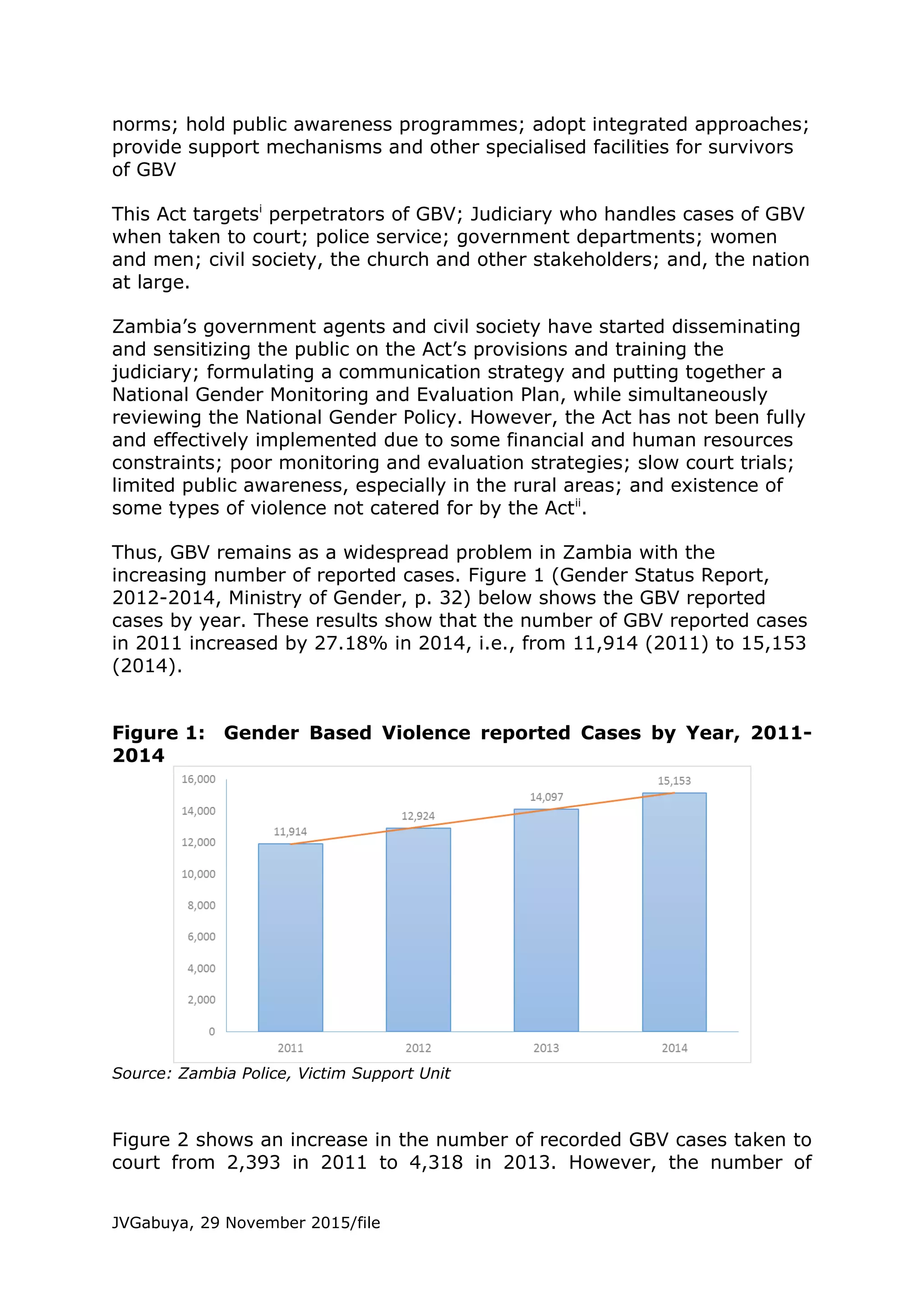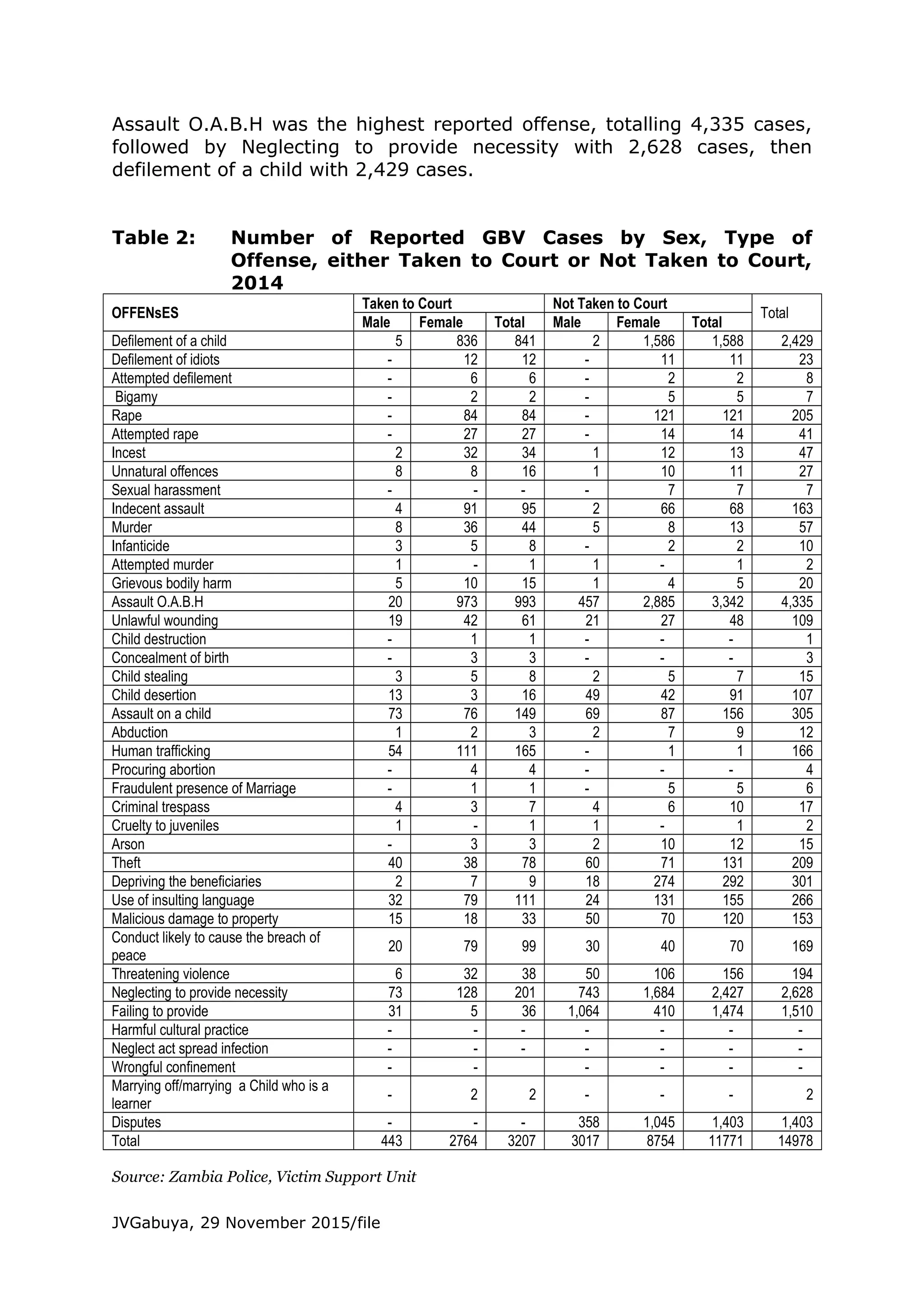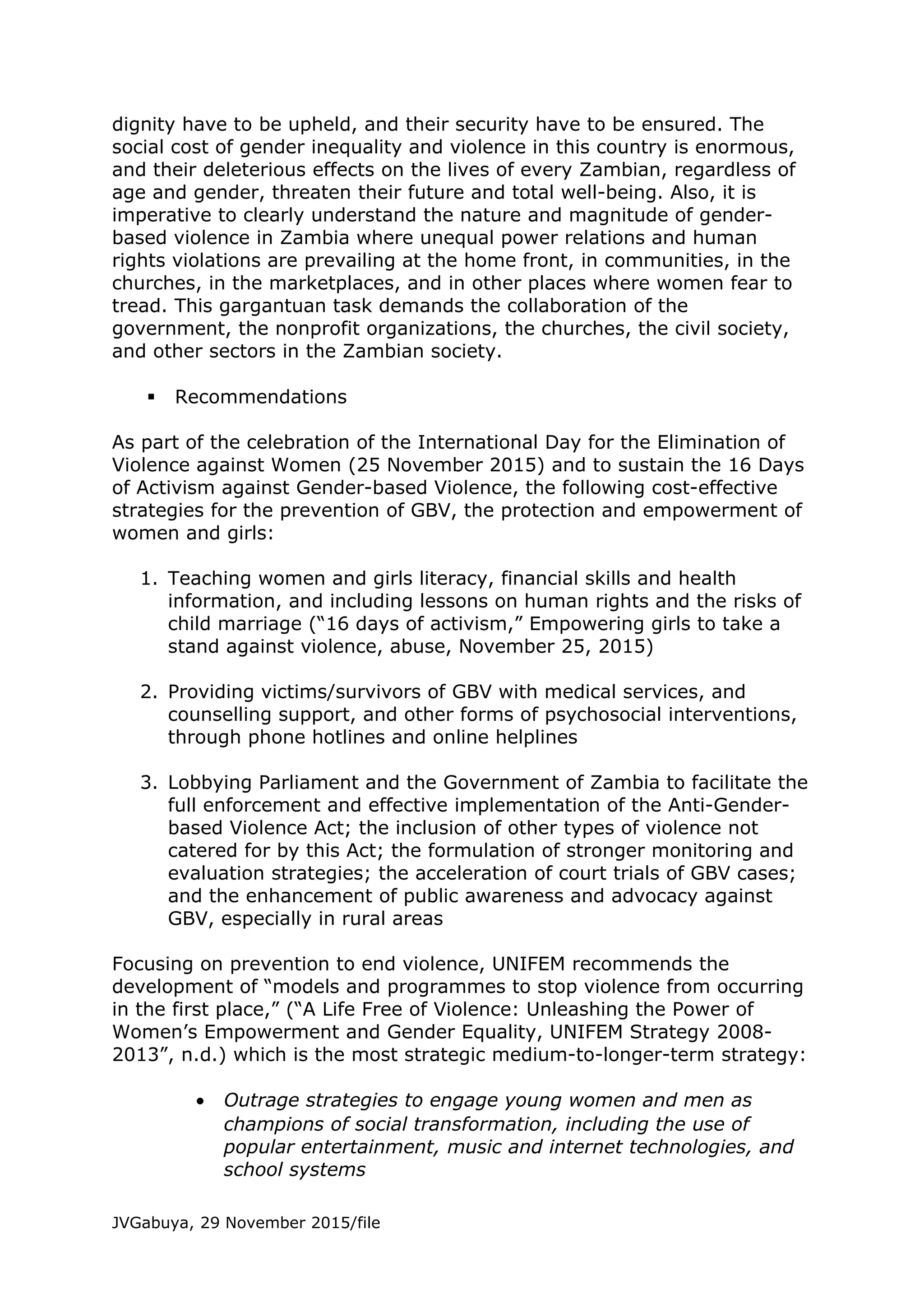The document discusses gender-based violence in Zambia. It describes Zambia's Anti-Gender Based Violence Act of 2011 which aims to eradicate GBV. It reviews reported GBV cases in Zambia and risk factors for GBV using an ecological framework. It finds that reported GBV cases are increasing, with women and girls most affected. It recommends strategies to prevent GBV including education programs, victim support services, and fully implementing and enforcing anti-GBV laws.










